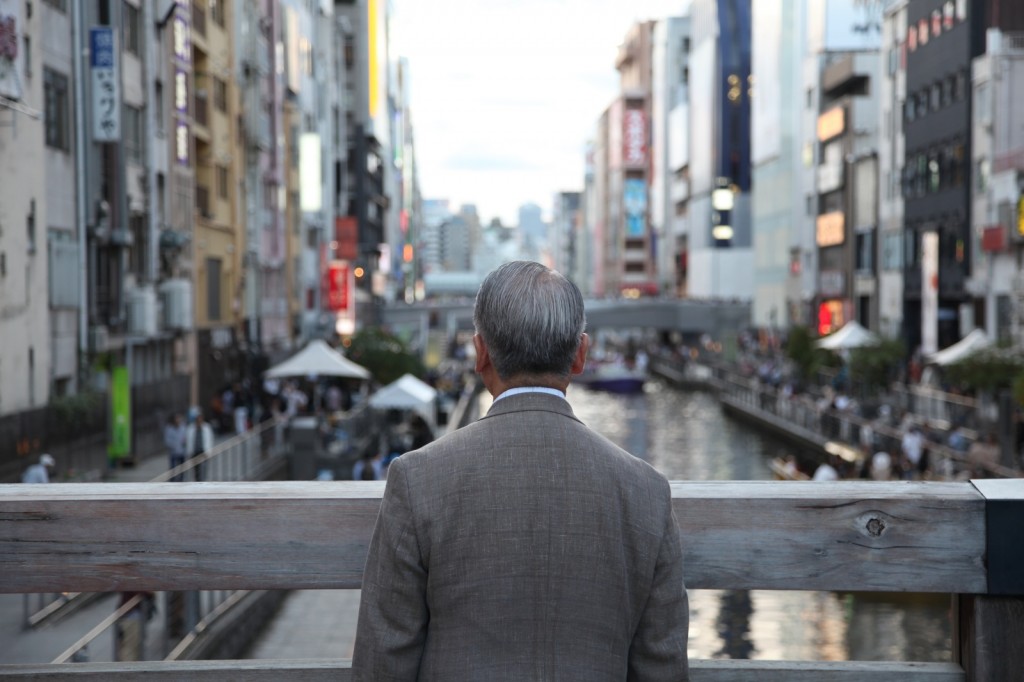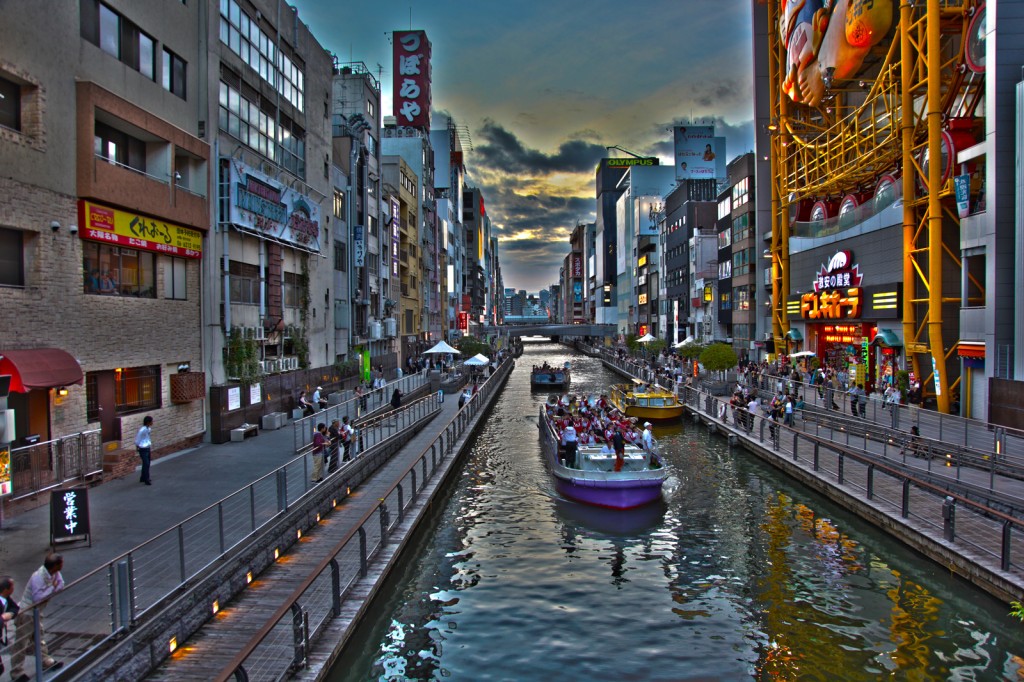Dotonbori, is one of the principal tourist destinations in Osaka, Japan. It is a single street, running alongside the Dotonbori canal between the Dotonboribashi Bridge and the Nipponbashi Bridge in the Namba ward of Osaka. A former pleasure district, Dotonbori is famous for its historic theaters (all gone now), its shops and restaurants, and its many neon and mechanized signs, including snack/candy manufacturer Glico’s giant electronic display of a runner crossing the finish line.
History
Dotonbori traces its history back to 1612, when a local entrepreneur, D?ton Yasui, began expanding the tiny Umezu River, which ran east to west, hoping to increase commerce in the region by connecting the two branches of the Yohori River, which ran north to south, with a canal. D?ton’s project was interrupted when he died defending Toyotomi Hideyori in the ill-fated Siege of Osaka, but his cousins finished the canal in 1615. The new lord of Osaka Castle, Tadaki Matsudaira, named the canal and avenue beside it Dotonbori (“bori” from “hori”, meaning “canal”), even though Doton had been on the losing side during the siege.
The character of Dotonbori became defined in 1621 when the newly minted Tokugawa Shogunate instituted urban planning, designating Dotonbori as the entertainment district of Osaka. By 1662 the avenue boasted six Kabuki theaters and five Bunraku theaters, as well as the unique Takeda Karakuri mechanical puppet theater. Many restaurants and cafes were built to cater to the flood of tourists and entertainment-seekers pouring nightly into Dotonbori.
Over the years, declining interest in traditional forms of entertainment led to the closing of most of Dotonbori’s original attractions. Its five remaining theaters were bombed and destroyed during World War II.
Source: http://en.wikipedia.org/wiki/D%C5%8Dtonbori

